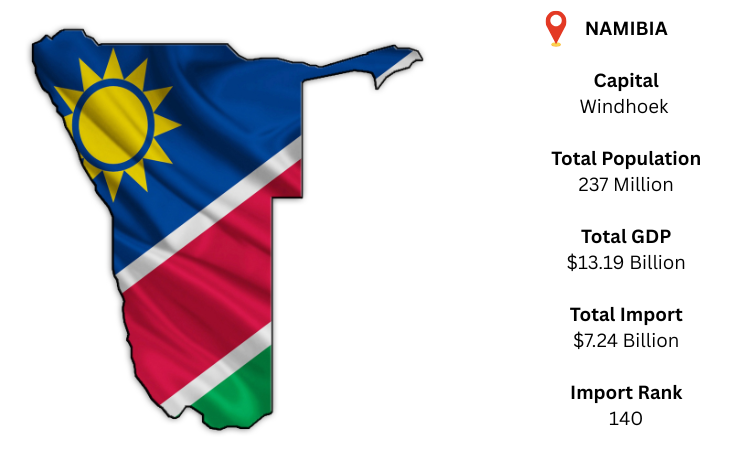Namibia is a country in southwest Africa that shares borders with South Africa, Botswana, Zambia, and Angola. Its coasts run along the Atlantic Ocean. Windhoek is its largest city and capital. As of 2023, Namibia’s GDP is approximately USD 13.19 billion. As per Namibia import data, with a projected USD 7.24 billion in imports in 2023, the biggest amount ever recorded, the nation ranks between 125th and 140th in the world in terms of import volume. Namibia's biggest exporter is South Africa, making up around 35–36% of all imports. Mineral fuels and oils are the largest category of imported goods, accounting for around 21.8% (USD 1.58 billion) of all imports as per Namibia Import Data.
As per Namibia customs data, Namibia heavily depends on South Africa for consumer goods, machinery, and energy, as seen by its import situation. Even though its economy is modest, it shows extensive global integration by sourcing essential inputs from China and India, including petroleum, electrical equipment, automobiles, and minerals.



